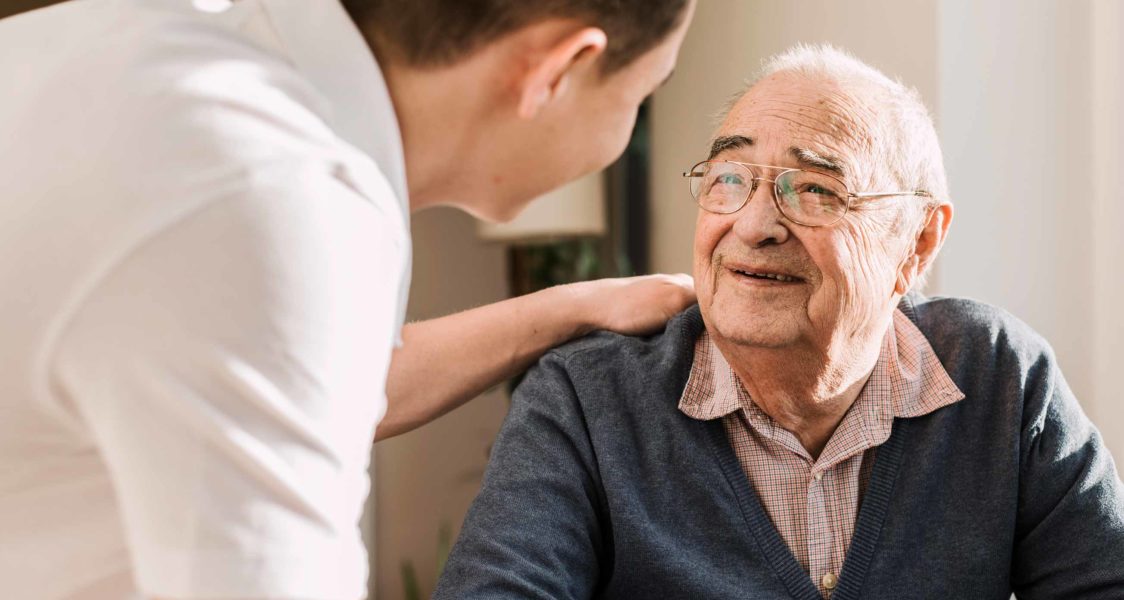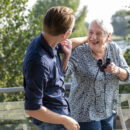Senior Loneliness: How It Impacts Health, and What to Do About It
Shrinking social circles, poor health, life changes, and even transportation challenges can mean isolation for older adults. If isolation leads to loneliness, it can have a devastating on health and quality of life.

Shrinking social circles, poor health, life changes, and even transportation challenges can mean isolation for older adults. If isolation leads to loneliness, it can have a devastating on health and quality of life. Fortunately, there are things you can do to prevent social isolation for yourself or the senior in your life.
The Health Risks of Loneliness
You don’t have to be alone to feel lonely. Loneliness is the perception of being alone and isolated, and having a feeling of disconnectedness. You may know — or be — one of the 42.6 million older adults who experience this every day.
This emotional state has physical consequences that can be devastating, especially in seniors:
- The lack of social relationships is as much a risk factor for death as smoking or obesity.
- Loneliness can cause high blood pressure, increase the risk of depression, and cause a higher level of the stress hormone cortisol.
- People with few social connections or who feel lonely have 29% higher risk of heart disease and 32% higher risk of stroke.
- Lonely people have a faster cognitive decline than those who have more satisfying social connections.
The Benefits of Staying Connected
If being lonely hurts your quality of life, it stands to reason that being socially connected can improve it. Research backs that up.
According to the Global Council on Brain Health, the body of scientific evidence suggests social engagement can help maintain your thinking skills and slow cognitive decline. Other studies link an active social life with better cardiovascular outcomes and greater immunity to infectious disease, among other health benefits.
Why is that?
Patricia Churchland, a contemporary philosopher who focuses on philosophy and neuroscience, puts it this way: “We long to belong, and belonging and caring anchors our sense of place in the universe.”
When we no longer feel anchored, our sense of self feels threatened. Just like when we feel physically threatened, our bodies respond with stress hormones that can have a cascade of negative effects. When we’re not threatened, our bodies don’t have to send those stress hormones into overdrive.
Social activity keeps you connected. When you belong, you find emotional support — and you know that you matter to others. That goes a long way toward a more positive and healthier life.
Solving the Senior Loneliness Problem
So what can you do if you think you or your loved one is struggling with isolation or loneliness? You can start by taking an Isolation Assessment from Connect2Affect, a project of the AARP Foundation. It can help identify key risk factors, and it offers suggestions for getting more connected.
Here are some simple, small steps you can take today to make more meaningful connections with others.
- Face-to-Face Time.
Phone calls, emails, even Skype or FaceTime are nice, and when friends or family live far away, they can be your only options. But it’s important to have in-person interactions too. In fact, a 2015 study found that the mental health benefits of regular face-to-face social interactions — especially among older adults — reduce the risk of depression.
Things you can try:
- Set up a regular coffee or tea date with a friend.
- Invite someone to have lunch or dinner with you at home.
- Take your dog for a walk in a park where there are people you can chat with.
- Group Activities.
The Australian study mentioned earlier found that for every group involvement that participants lost in the year after retirement, their quality of life went down by 10%. Even if you don’t like big groups, there are ways to be involved in rightsized groups that will make life better:
- Volunteer at a nonprofit, school or civic group. If you’re not sure where to start, check out Connect2Affect and VolunteerMatch, websites that will help you find volunteer opportunities in your area.
- Explore options at your local church or synagogue, such as group studies, choirs or service projects.
- Have some fun with a regular bridge or poker night, book club or sewing group.
2. Senior Living Communities.
Many residents of senior living communities say that having so many ways to meet people has made their lives incredibly rich. Between events, activities, clubs, dining venues, and having neighbors their same age, they discover new friends that feel like family. Some couples decide to move to a community as part of planning for the future. If anything should happen to one of them, the other will have support to feel less lonely. Use our community locator tool to find a senior living community in your area.
Loneliness shouldn’t be brushed aside as a normal part of aging. Acknowledge it, then take the first step toward a better — and possibly longer — life.









